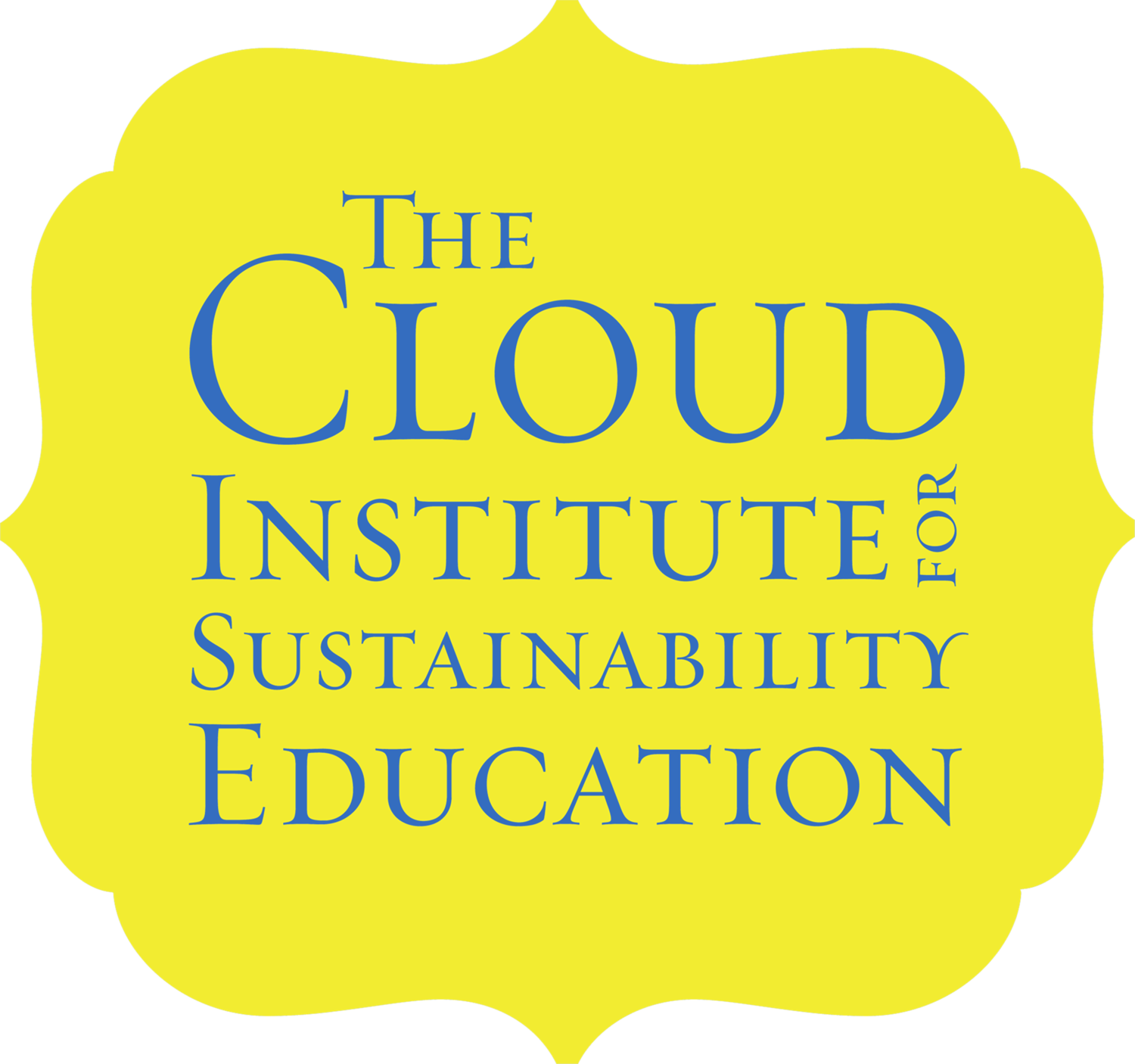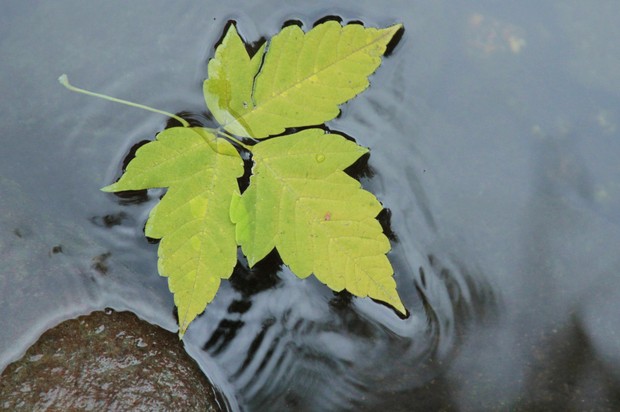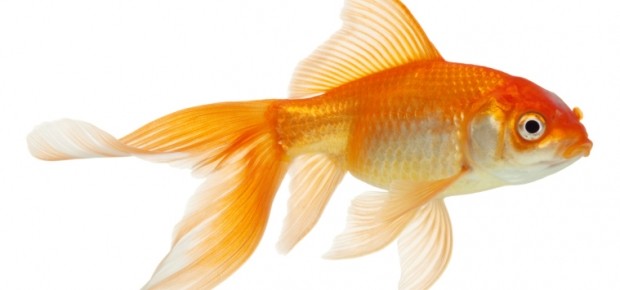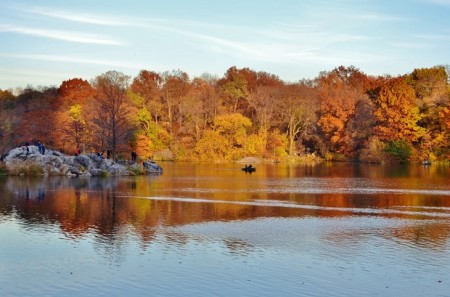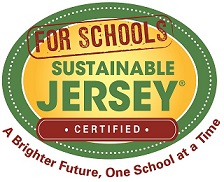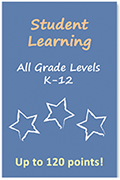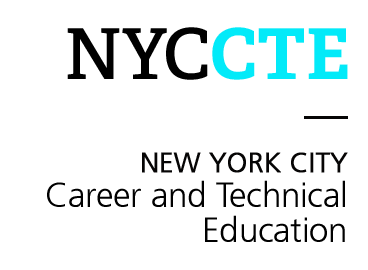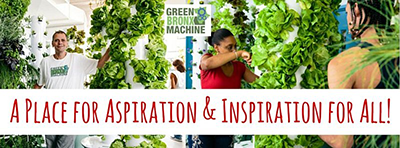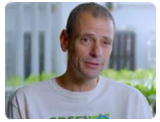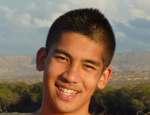Repost from: http://www.jsedimensions.org/wordpress/content/how-our-teaching-changes-our-thinking-and-how-our-thinking-changes-the-world-a-conversation-with-jaimie-cloud_2011_05/
Original Post Date: May 8th, 2011
How our Teaching Changes our Thinking, and How our Thinking Changes the World: A Conversation with Jaimie Cloud
By Pramod Parajuli and Rosemary Logan
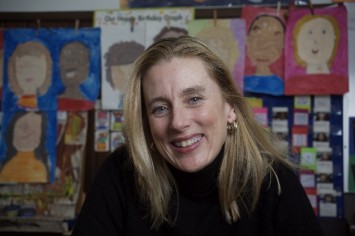
(Guest Editor’s Note: Jaimie Cloud, the Founder and President of the Cloud Institute for Sustainability, is one of the sustainability education thinkers and practitioners we chose to interview and profile in this issue of JSE. The conversation below took place during December 2010 and January 2011 between Jaimie, Pramod and Rosemary. After the draft version of this conversation was prepared, Jaimie filled in with additional contents and illustrations. A systems thinker and a thought leader in Education for Sustainability (EfS), Jaimie concludes this conversation with five-fold working principles. First, live by the natural laws. Second, read the feedback. Third, a healthy and sustainable future is possible, we just have to educate for it. Fourth, it all begins with a change in thinking. And, finally, we are all responsible. Jaimie also points out that only 29% of her EfS clients are attracted to this area due to their concern with the environment. This is eye opening and demands our attention to other dimensions of learning and seeking sustainability. Perhaps they are social, cultural, economic, political, ethical and moral. I hope you enjoy this conversation. Through the pages of JSE, you are also invited to expand and enrich what we have started.
Pramod Parajuli, Ph.D.)
1. Rosemary and Pramod:
Jaimie, you are recognized as one of the thought leaders of the Education for Sustainability (EfS) concept and movement. Will you tell us about your background? Who are you and what led you to found the Cloud Institute? What is the work that you do, with whom, and how did your organization come to be?
Jaimie: I was in one of the first experiments in global education from the 6th-12th grades. As a result, my work began at the age of 11. I grew up in Evanston, Illinois. Our teachers were influenced by Buckminster Fuller and other luminaries of the time. The gist of the experiment was to prepare us to thrive in the 21st Century, to become agents of change and inventors of the future we want. They provided us with learner-centered, constructivist methodologies that produced reflective, flexible and creative questioners, systems thinkers, lateral thinkers, media literate, self-regulated learners prepared to deal with rapid change, increasing complexity and interdependence, uncertainty, diversity, and global challenges, including the environment, peace and security, human rights and human development.
In middle school, I could not have predicted that I would be a founder of the field of Education for Sustainability. The term sustainability and sustainable development, as we understand it today, would not be coined until 1987, nineteen years later, and the field of Education for Sustainability would not be born until 1992 in Chapter 36 of Agenda 21—some 24 years later.
I grew up to become a Global Educator because that’s what I knew. In 1987, when the word sustainability appeared in a U.N. report, Our Common Future, I thought to myself, “That’s the name for the desired condition I want to educate for.” I had been tracking the state of the planet data since 1968—since I was 11. Now I had a word to describe what I saw: The situation was un-sustainable for humans and other species of plants and animals with whom we share the planet. Sustainable seemed like a better idea. Once I had the word, I had the concept. Once I had the concept, I knew I needed to educate for sustainability. My first questions were: What is sustainability? How do you measure it? What knowledge, skills and attitudes will be required to make the shift toward a sustainable future? How will we educate for the sustainable future we want? Am I already doing “it” as a global educator? How will it change what I’m doing now? Who is being attracted to this work? Are they smart, creative whole systems thinkers? Can they dance?
I founded the Sustainability Education Center in 1995 at The American Forum for Global Education. I felt like a laggard. It had been three years since Chapter 36 of Agenda 21 was written. In 2002, we officially spun off and became a 501-C3, and we were eventually re-branded by Heller Communications as The Cloud Institute for Sustainability Education. As thought leaders involved in the development of the field of Education for Sustainability (EfS), we work to define the field of EfS through our framework, our EfS standards and performance indicators, enduring understandings, and the articulation of all the fields that inform EfS and the other frameworks and standards with which we are aligned. Our mission is to ensure the viability of sustainable communities by leveraging changes in K-12 school systems to prepare young people for the shift toward a sustainable future.
- We monitor the evolving thinking and skills of the most important champions of sustainability and transform them into educational materials and a pedagogical system that inspires young people to think about the world, their relationship to it, and their ability to influence it in an entirely new way.
- We believe that K-12 education can substantially influence beliefs, attitudes, values, and behaviors related to sustainability. This is the most fertile ground for helping to shape a society committed to sustainable development.
- We develop in young people and their teachers the new knowledge and ways of thinking needed to achieve economic prosperity and responsible citizenship while restoring the health of the living systems upon which our lives depend.
That is my story. Please also visit our blog at: /blog/category/resources
2. Rosemary: Though EfS is a relatively new term, the concept is not. Could you, for example, describe some of the precursors to EfS? What fields most strongly contribute to EfS? What, for example is the relationship between EFS and environmental or ecological education? Has environmental education played a role in the identity formation of EfS?
Jaimie: Precursors to EfS are global education, future studies, environmental education, wholistic education, diversity education, win/win conflict resolution, systems thinking and system dynamics education, to name a few. From my perspective, there is no one field that dominates EfS in the U.S. Each country is different in this regard. In the U.S., the field grew because a handful of people from a lot of different fields emerged simultaneously, independently and co-constructively. The momentum to grow the field is much greater internationally than it has been in the U.S. My colleagues globally are in Ministries of Education and Colleges of Education. Here, we are a few NGOs holding the space for the development of the field, and a very few colleges of education have taken the lead. Prescott College is one of the few.
The fields that strongly contribute to EfS are:
– Environmental Science and Education
– Science Education (Physics, Biology, Chemistry, Earth Science…)
– Neuroscience
– Quantum Physics
– Sustainable Economics
– Global Education
– Ecological Design and Architecture Education
– Holistic Education
– Future Studies
– Arts and Humanities (Literature, History, Performing, Visual…)
– Organizational Learning and Change
– Environmental Ethics and Philosophy
– Ecological Psychology
– Positive Psychology
– Science of Happiness
– Conflict Resolution Education
– Systems Thinking and System Dynamics Education
– Game Theory
The field of neuroscience and the new research on the brain has been extremely useful in contributing to our ability to teach and learn about the paradigms, frames, or mental maps that drive people’s behavior. Thinking drives behavior, and behavior causes results. If you don’t like the results, the most upstream place to intervene is the thinking. That is why education of a certain kind (Orr) is key to making the shift toward sustainability and regeneration. Piaget explained the difference between assimilation and accommodation. So much of our current reality is a result of old ways of thinking and a gap between old mental models and current reality. Our job is to close the gap between mental models and the reality itself based on the evidence—based on the data. That is why Neuroscience is included on The Cloud Institute’s list of fields that contribute to EfS.
Understanding the relationship between EfS and environmental education is interesting because it is not as simple as you might think. From a conceptual point of view they are, in many ways, aligned and complimentary. Certainly, we are all interested in contributing to a sustainable future through education. What is in a name? This is where things get tricky. People call what they are doing whatever they want to call it—whatever there is funding for, or whatever they are used to calling it. The only way to know whether a program is EE or EfS is to study the attributes, the competencies, and the measureable outcomes.
If one is doing outdoor education and kids are connecting to nature and falling in love with nature by studying science and biology or ecology and ecosystems, then some people would call that environmental education, place-based education, Environment as an Integrating Context (EIC), environmental science, and/or outdoor education. EE has a robust set of standards that are well respected and do an excellent job of capturing what EE is and does. The Cloud Institute’s EfS Content Standards for Education for Sustainability include Responsible Local and Global Citizenship, Sustainable Economics, the Dynamics of Systems and Change, Healthy Commons, Multiple Perspectives, the Natural Laws and Ecological Principles, Inventing and Affecting the Future, Sense of Place, and Cultural Preservation and Transformation. Embedded in the content standards are twelve enduring understandings, five distinct thinking skill sets, six core attitudes and a host of best instructional practices. It is quite easy to see the similarities and differences between EE and EfS if you look carefully at the core content and learning outcomes we have each articulated. Everyone wants to be the umbrella and no one wants to be under it. So there is no sense in trying to determine which one is the “umbrella” field.
The purpose of Education for Sustainability, from our perspective, is to contribute to our individual and collective potential and that of the living systems upon which our lives depend. We have to learn how to be well in our places without undermining their ability to sustain us over time. Even better is to learn how to develop a regenerative relationship with the living systems upon which our lives depend. The foundations of our knowledge, skills, and habits of mind are cultivated in our schools. All the children and young people are legally required to go to school. That is why we work in schools.
3. Pramod: Has David Orr’s work, his 15 principles we need to know for example, informed your work?
Jaimie: Absolutely. We have embedded his thinking, and that list informs our standards and performance indicators. They fit most appropriately in our core content standard, Natural Laws and Ecological Principles. We have integrated David’s list as well as several other people’s, including Janine Benyus’s work in the principles of Biomimicry, and Sim Van der Ryn’s Principles of Ecological Design, along with several other authors who have tried to capture the essence of what we need to know about the “operating instructions” for the planet. All of David Orr’s books are required reading. He has had a huge influence on my work. He was also one of the first people to make the case for the role of education in contributing to sustainability. “The worth of education must now be measured against the standards of decency and human survival—the issues now looming so large before us in the 21st century. It is not education, but education of a certain kind, that will save us” (Orr). Too few have said this out loud or have published on the topic.
In most serious conversations about sustainability, I have not detected a shared understanding of the role of education, particularly K-12, in contributing to the shift toward a sustainable future. I have spoken to system dynamics modelers who assume that the time horizon for the return on an investment in Education for Sustainability is twenty years. When I hear that, I ask them, “Do you know any children?!” In my experience, it takes children and young people very little time (especially compared to adults) to turn what they’ve learned into action at the local level. On average, they are much more responsive, creative, and quicker to make change than we adults are. A seriously flawed assumption is at work there. To quote David Orr again, “This current situation we find ourselves in is not the work of ignorant people. On the contrary, it is the work of extremely well educated people—with advanced degrees.”
In David’s book, Earth in Mind, an entire chapter is devoted to the question, “What is education for?” In the service of what? We begin many conversations about EfS by asking the following questions that are classic to our field:
What kind of future do we want? What do we want to sustain? For whom, for how long, and what does education have to do with it? The very next question begged has to be, “What is education for?
4.Pramod: As of now, there are some 400 plus definitions of sustainability. Is there a particular definition of sustainability (or a mix) that you prefer? What are foundational concepts of sustainability that you and the Cloud Institute are comfortable with?
Jaimie: Yes…there is one that I love. The one I love is from Donella Meadows, “A sustainable society is one that is far-seeing enough, flexible enough, and wise enough not to undermine either its physical or its social systems of support.” I also love and use Mathis Wackernagel’s definition a lot too. He says that sustainability means “a quality of life for all within the means of nature.” That’s a nice, short, and elegant one. We collect definitions of sustainability because people always ask us for one. Having said that, defining it is not actually going to be enough if you really want people to understand what the “it” is. I often get calls for advice from people who are learning how to educate for sustainability. They will often call after the fact when they feel that they have flopped. My first question is always, “Tell me you didn’t define education for sustainability in your opening line.” That was their first and last mistake. In my experience, defining sustainability is like defining education, or grace, or democracy or excellence. It is not the definition that captures the essence. It is the essence itself, and you just have to learn what it is and experience it to get it. Defining sustainability makes people’s eyes glaze over…it doesn’t help people get it. Yet, definitions are required. That is why we collect them. When people ask me for my “elevator speech,” I often recommend we take the stairs…
Sustainable solutions solve more than one problem at a time and minimize the creation of new problems (Wendell Berry). They contribute to the health of the very systems upon which they depend. Think about the word Sustain-ABLE- what makes something sustain-able? What makes human life on Earth sustain-able? Mutually beneficial relationships with all of the living systems upon which we depend. It’s real simple. It’s not sustain-GUARANTEED. Death and taxes are still the only two guarantees. I do not see evidence of a shared understanding among a critical mass of human beings on Earth about what it takes to sustain us as a species over time. We have created incredibly unfavorable conditions for humans to survive (let alone thrive), as well as for all the creatures with which we are interdependent to survive and thrive over time. Unintentionally, to be sure, but the feedback is the feedback.
5. Pramod: Among others, your work with the K-12 school teachers seems to be very prominent and rigorous. I call it the “one teacher at a time” approach to deepening sustainability. What is your experience in working with teachers? Do you have some success stories (or lack thereof) to share?
Jaimie: Actually, we work with “one system at a time.” One teacher at a time would take too long. The most whole system work we do is with school districts and their communities learning together for a sustainable future. We call those our Sites Learn initiatives. Examples include the nine sites around the country that are members of the Society for Organizational Learning (SoL) Education Partnership that Peter Senge and I created with a team of colleagues, and also our New Jersey Learns program which is funded by The Geraldine R. Dodge Foundation and is made up of a growing number of sites around New Jersey that participate in Sustainable Jersey. The next level on the continuum is our Districts Learn work. We work with individual districts and consortia of districts to Educate for Sustainability. The best example of that is our work with seventeen districts through the Putnam Northern Westchester BOCES on a massive and multifaceted EfS initiative that is grounded in a core set of web-based exemplary units of study across all grade levels and disciplines (www.pnwboces.org/efs). Next, we work with individual schools (Schools Learn) from PS 208 in Harlem to the Denver Green School, and from Trevor Day School in NYC to Marin Country Day School in Corte Madera, California, to name a few. We need to have models and exemplars of what EfS looks like in a school, a district, and a community. If you go to our website you can see our approach and all our programs described there. We network all with whom we work so we can scale up the quantity and quality of the work as efficiently and effectively as possible.
Having said all of that, indeed a big part of the work we do involves professional development and coaching of teachers, leadership development and organizational learning consulting and planning with administrators, and work with educators to embed EfS into the core curriculum. Most K-12 schools are new to EfS. A small minority have been working on it since the early 1990s.
We usually begin a relationship with a school or district by providing an introduction to sustainability and education for sustainability in order to achieve three outcomes: 1) A shared understanding among the stakeholders of sustainability and EfS; 2) A personal rationale for educating for sustainability, and; 3) Participants will become inspired and hopeful about contributing to sustainability through education. If we are able to spend one day with educators—even just a day—as crazy as education is these days with testing, budget cuts, and graduation rates at an all time low, at the end of that day, the overwhelming response from teachers and administrators is, “Yes, this is important. I will do what I can to educate for sustainability. It’s our responsibility. Kids need and deserve this kind of education. Yes, I will do this.” Maybe they are an “early adopter” and they are ready to start “sustainablizing” (a short hand word we made up) their curriculum and instructional practices, or maybe they’re not quite ready for that yet, and they go home and pow-wow with their families to start being more conscious about their food buying habits or their waste production. Whatever they are ready for, I can say with all honesty that I have never met an educator that said, “Nah…I think I’ll keep educating for unsustainability. I don’t really like kids all that much anyway. I don’t care about their future.” Never once. All the educators that I have ever met without exception want what is good for kids. It is a deep and fundamental aspiration to contribute to the health and well-being of our children and of future generations. They remember why they became educators in the first place…and the creativity and the work begins. Sustainability and EfS are what’s better for the kids. This is goosebump material! The work of educating for sustainability is extremely exciting, energizing, and fun. It is a lot of work—especially in the beginning—and it is worth it. Our children are worth it.
Let me provide some examples of what it looks like to work with a teacher in a school to embed EfS into the curriculum:
Example ONE: This is a story from one of our partner schools, St. Paul’s School in New Orleans. They use the Cultural Literacy Curriculum developed by E.D. Hirsch. One of the teachers we work with was teaching a course on the human body and trying to figure out how to incorporate EfS into the learning. What people don’t always realize is that educating for sustainability is not always about sustainability. It is first and foremost about developing the knowledge and the ways of thinking that will help us to thrive over time—systems thinking is a good example. We want to develop as systems thinkers and to be able to transfer those habits of mind where and when appropriate. The human body is a great thing to study to understand systems and interdependence and the system’s archetypes. You can chart behavior over time…study interdependence by understanding how one part of the system affects the other parts… and all of this can be studied through the human body. As soon as the teacher saw the connection—saw that systems thinking could contribute to her students’ understanding of the human body (and contribute to sustaining human life on the planet…)—it was a win-win-win. She fell in love with the idea and off she went. It is a great unit of study.
Example TWO: An example of the results of EfS on students is the work of a science teacher at Marin County Day School in California, which is another one of our partner schools. This science teacher was interested in having her students study indigenous plants on the mountain upon which the school is built. They went to the local library to find books on the topic. No books on indigenous plants to the mountain were to be found. The fifth graders decided to write the book. So they did. They published and illustrated the book, and there are now several copies in the local library for others to use. Authentic curriculum and instruction are attributes of EfS. This is a beautiful example of EfS. It is an example of an authentic contribution by students in school to the sustainability of the place in which they live. The process was as relevant as the content of the book itself.
Example THREE: Another example of our work with schools includes the development of two full courses of study for the NYC Board of Education. A new Participation in Government course, Inventing the Future: Leadership and Participation for the 21st Century and an Entrepreneurship course, Business and Entrepreneurship for the 21st Century are learner-centered, standards-based, assessment-driven, and differentiated, all attributes of EfS. Each course was accompanied by a series of professional development programs for teachers and both were very successful at accomplishing the learning outcomes for teachers and students that they were designed to achieve.
Example FOUR: A Pre-K teacher of 3-4 year olds at the Denver Green School is a Reggio-trained teacher. She is a master of constructivist education. The EfS learning outcomes and content standards worried her, because she wanted her students to drive their own inquiry. Her curiosity and dedication to Education for Sustainability (the mission of the school) inspired her to teach for Healthy Commons. Her students have a play space that is a commons that the kids share. She decided that it would be useful if her students understood their rights to, and responsibilities for, that commons. She thought it would take the entire school year. She called me in October and said, “They’ve already got it! They are applying it and testing it and are transferring it outside of school…now what am I going to do?” The kids understood very quickly the difference between “mine” and “ours” and embraced the idea that the commons were that upon which we all depend and for which we are all responsible. It was a powerful reminder of how quickly children and young people learn and apply what they have learned.
The LAST Example (for now): Earlier I mentioned our work with seventeen districts in the Putnam Northern Westchester BOCES in NY. Hundreds of teachers are involved in innovating and writing exemplary curriculum units that other districts can subscribe to (www.pnwboces.org/efs). Some teachers in the 3rd -5th grade teacher cohort decided they wanted to teach about the Commons as well (the Commons is one of the favorite EfS Standards among teachers). They had chosen a book entitled, Our Commons, by Molly Bang. The teachers were so excited the librarian found a book on the Commons, and they wanted to use it in the unit. Halfway through the book, however, the author starts talking about the state of our local and global Commons…all bad news. I was concerned. We talked about the brain’s reaction to fear and how it produces the “away response” in people. We discussed what the unintended consequences would be of scaring ten-year-old children with the bad news of our current reality and how we could solicit engagement and creativity and help them to turn the problems into opportunities to create positive change. This is not the field of Education About Unsustainability. It is the field of Education for Sustainability. One of the teachers found the solution: “We can take the kids through the first half of the book, then challenge them to write their own endings to the book.” It was brilliant. The plan is to send the students’ new endings to the author so that she can read their ideas for creating healthy Commons.
6. Pramod: In my experience, K-12 public education and the role of teachers in its success (or failure) has always been one of the most contentious and difficult issues in the United States. Recently, there has been much praise as well as vilification of the public education system. Amidst the push for privatization of the school system, how does your work around Education for Sustainability fit in? How does your work empower public (or private) schools and teachers to succeed and thrive?
Jaimie: Many people have given up on public schools and yet we keep sending the majority of our children there. It is a bad scenario. We can either give up on them and create something else in their stead, or we can transform them into learning organizations that contribute to our children’s individual and collective potential and that of the living systems upon which our lives depend (we actually like a bit of both.) We cannot, I would argue, continue to send the majority of our nation’s children to places for thirteen years of their lives that we have abandoned financially, psychologically and emotionally. That’s just a disaster. That’s part of the problem. I’ll say that upfront.
Schooling has not, for the most part, evolved and changed with the evolving and changing world in which we live. It’s no secret. The old industrial form for education (public and independent schools can both be guilty of this) is part of the reason our schools are failing our children, our society, and our world. We cannot blame that on our teachers. Actually no blame can be assigned to any one of the players responsible for K-12 education in our communities. All systems are perfectly designed to get the results they get (Senge). Education in the U.S. is a systemic problem. Schools that are still modeled after the industrial revolution were not designed to change, were not designed to respond to, or to make change, and were not even designed to produce learning. They were designed to train people to work in factories. We know the history of schooling here in the United States. Schools are outdated if they are teaching the disciplines in silos, if class periods are forty-two minutes long or close to it (which no research on learning supports, by the way), and if teachers are still standing, delivering, and testing for recall. They will not be successful in the 21st Century and they will not prepare our children and young people to be successful. It is a design challenge to be sure. You can put that design challenge on top of challenges presented by the No Child Left Behind initiative that put many public school systems in a tailspin, which on the one hand was useful, and on the other hand destructive. Useful in that they asked teachers/districts to be accountable for student learning and student performance, destructive because of the unintended consequences of test preparation and a focus on tests. Test scores are an indicator of success; they are not the goal of education.
How does Education for Sustainability address the current reality of schooling in the U.S. today? We create learning organizations that are vision-oriented and feedback driven. We improve the relationships between schools and their communities, which generates emergent properties that benefit the health of both by accelerating the shift toward sustainability in those places. We inspire educators with aspirational goals, high quality teaching and learning, and low tolerance for mediocrity or failure. We stand for authentic teaching and learning and youth leadership. We use all the best instructional practices that improve teaching and learning, including backwards design in our curriculum planning with educators, curriculum documentation and mapping, and the use of data (feedback in the form of student work, evidence of growth over time and, yes, standardized test scores) to inform practices continuously improving through teacher development and critical conversations. We use learner-centered, standards-based, feedback driven, place and project-based, differentiated instruction in EfS (to name a few). We increase critical, creative, and systems thinking, which contributes to good test scores and college acceptances while contributing to civic engagement and the sustain-ability of human life on the planet. EfS is 21st Century education at its best.
7. Pramod: At the Cloud Institute, you value the importance of educating “for sustainability” rather than “about sustainability.” What is the difference you have found between these two? At Prescott College Ph.D. program in Sustainability Education, we also talk about education as sustainability. In our interpretation, if “education for sustainability” could be about enabling people to do no harm to the people or the planet, “education as sustainability” is to actually do good to people and the planet as much as possible. Any thoughts you have on the emerging vocabularies we use and conceptualizations? Have these words and concepts been helpful to you and your work?
Jaimie: It is clear that people educating for sustainability do not all have a shared vocabulary with shared meanings. What you call “education as sustainability—actually do good to people and the planet as much as possible,” we would call educating for sustainability by contributing to the regenerative capacity of all living systems. What you call “educating for sustainability—doing no harm to the people or the planet” we call “better than a poke in the eye” but we have higher aspirations for EfS than that. As I mentioned earlier, the Cloud Institute’s framework for Education for Sustainability is designed to contribute to our individual and collective potential and that of the living systems upon which our lives depend (also see questions 3 and 5 above). The ultimate goal is regeneration, of course. However, it’s no easier a word to sell than sustainability…which is why we don’t use it in marketing materials. Bill McDonough, who is famous for Cradle to Cradle Design, always talks about how wrong it is to aspire to doing less bad when doing more good is so much better. We agree with Bill on this and many other points. More good is what we aspire to.
When we educate about sustainability we treat sustainability as a topic. In my opinion, its use strictly as a topic is limiting and does not allow for what I believe is its highest and best use. To us sustainability and regeneration (whatever is considered the most aspirational goal) is the name for the desired condition we are educating for. I think the greatest value to us is that the concepts of sustainability and regeneration have their value as aspirational and measurable destinations.
The reason I don’t abandon the word sustainability is that you can measure it. There are measurable indicators of sustainability. We can measure whether we are using more resources faster than the replenishment rate. We can measure our Ecological Footprint. It is the Ecological Footprint that has made it possible for us to realize that we are using bio capacity on Earth faster than it is being replenished, and that is that the very definition of unsustainable. We are constantly looking at stocks and flows and looking at the health of the systems upon which our lives depend. We measure the quality of the water, the air, the state of our Commons, the health of our wetlands, fish stocks, top soil, public health, the gap between rich and poor, graduation rates, etc. These are all indicators of sustainability that we can measure. We use the indicators we have, and we are developing new and better measures all the time. How are our education systems doing ? We can measure it. If we put it all together in a place, we have sustainable community indicators. I think the fact that we can measure to what extent we are moving toward or away from sustainability (and even regeneration) is very useful.
8. Pramod: You have also been enthusiastic about considering schools as learning organizations. Your approach to EfS seems to be informed by a whole systems approach. I will throw one more metaphor for your consideration: schools as ecosystems. How successful have you been in getting across these ideas to school administrators, teachers, and parents?
Jaimie: In schools that “learn,” everyone is encouraged to keep thinking, innovating, collaborating, talking candidly, improving their capabilities, self-correcting, and making personal commitments to a shared future…
We have a description of our whole systems approach on our website at /our-approach
To me, the difference between using the term “schools as ecosystems” vs. “schools as learning organizations” is the perception of these two terms in the marketplace. Ecosystems conjures up the word environment and that suddenly limits the market. This is my experience. As soon as people think what we do is related to “the environment,” then either they are interested or not interested. Our research shows that consistently over time; 29% of our audiences are interested in education for sustainability because of the environment, and the other 71% want to educate for sustainability for a variety of other reasons.
On the other hand, it is sort of obvious that a school should be a learning organization—like a hospital should be a healthy hospital. It seems so obvious to people and doesn’t scare anyone away. It explains that we’re moving from industrial silos of training to a more integrated place for learning. Peter Senge coined the phrase “learning organization” in his book entitled, The Fifth Discipline. He then wrote a book called, Schools that Learn. We agree that the attributes of a learning organization are perfectly suited for schools that want to thrive in the 21st Century. That is why we use the term. Having said that, schools are of course ecosystems, and as biomimics, it makes perfect sense to think of them as such.
9. Rosemary and Pramod: Last month (October 2010) we attended the AASHE (American Association for Sustainability in Higher Education) conference in Denver, Colorado. There we saw that assessing sustainability education was a hot topic. Could you please describe some ways that the Cloud Institute assesses student learning of EfS? How are these correlated with federal or state standards? Why is assessment important for EfS? What are the challenges posed to assessing such a form of education? What areas are in greatest need of improvement?
Jaimie: We distinguish between evaluation, assessment, and grading. When we assess, we are gathering information about what students are learning, how they are learning, what it means to them, what they know, and what they can do, using multiple indicators and sources of evidence. Assessment is used to meet a variety of evaluation needs and can be done informally (observation) or formally (tangible evidence). Assessment allows teachers to ascertain, monitor and produce learning. To evaluate is to ascribe a value to the information we have gathered. Evaluation legitimizes teachers’ and students’ assessment data. To grade is to assign a symbol/number to the evaluation. Grading communicates evaluation information but produces no new learning.
We use pre-post instruments to measure growth over time, formative measures all along the way, and we use summative measures at the end of units and courses to measure overall retention and success. Assessments that produce learning are doing double-duty, and that’s a good thing. There is never going to be more time, so integrating your instruction and your assessments/evaluations makes sense. Nature only integrates. We use a variety of tools to measure student performance. We regularly use prompts that promote reflective thinking and are project-based, and service learning opportunities are excellent ways for students to express what they have learned while making authentic contributions to sustainability in their communities.
Why are assessment and evaluation important? If you want to know whether you have addressed an EfS standard or any standard, you have to produce evidence of it in student work. You have to assess for it. We want EfS to produce the kind of knowledge, thinking, and attitudes that will prepare children and young people to participate in, and to lead with us, the shift toward a sustainable future. With our EfS Standards and Performance Indicators, the proper instruments and explicit scoring criteria we can measure the acquisition and application of the knowledge, skills, and attitudes that characterize EfS. We are working toward being able to demonstrate a correlation between a comprehensive approach to EfS in schools and communities and the improvement of sustainable community indicators in those places. What doesn’t get measured doesn’t get managed. We aim to see improvement over time. This is not just an intellectual exercise. EfS leads to a different way of thinking that drives different behavior that produces different results—sustainable results. We are responding to Einstein’s quote, “The significant problems we face cannot be solved with the same level of thinking we used to create them.”EfS is our contribution to that different way of thinking.
Evidence of success would include evidence of the enduring understandings of EfS and the EfS Standards and Performance Indicators embedded with the thinking skills that characterize EfS. Here is an example of how we do it: One of the teachers we work with at the Trevor Day School in NYC teaches health and nutrition and the food pyramid in science. As a result of working together, she completely redesigned the unit to educate for EfS through food and nutrition. She chose the EfS Standards and Performance Indicators she wanted the unit to address. She designed learning opportunities and the assessments, and now we’re looking at student work to see how well she accomplished her objectives. Looking for evidence, communicating degrees of quality through rubrics, exemplars, and other forms of explicit criteria, helps students develop a frame of reference for excellence.
10. Rosemary: To put a more human face on assessment, could you share with us a personal story of a moment or a series of moments that communicated a student or group of students “got it?” “It” being the concept of sustainability. What did it look and feel like? What were you thinking at the time?
Jaimie: The first one that comes to mind is not one of our students but is a great story about a student from Bristol, Vermont, who eventually received a Brower Youth Award for the work she started through school. Her name is Jesse Ruth Corkins. I always tell her story because it is exemplary. Jessie Ruth was in the fourth grade when Vermont adopted State Standards for Sustainability Education. By the time she got to 9th grade, she was not new to the concept.
In 9th grade, a science fair challenge her teacher assigned her class was to convert their school building from oil to a clean, green renewal form of energy. Jessie Ruth and her partner, another 9th grader, did just that. They did the research, the science, the math, the business case, the politics, the economics, the planning, the writing, the fundraising, the purchasing, and the project oversight and completion. The school board gave them the money to convert their school building to wood chips. They saved the building $30,000 in the first year and $90,000 in the fourth year. Jessie Ruth is a poster child for sustainability education. Every EfS Standard is evident in her work. Jessie Ruth then moved on to organize a statewide coalition called the Vermont Sustainable Heating Initiative. Her coalition received 20 million dollars and 100,000 acres from the state legislature to grow switch grasses and other plant products so Vermont could grow its own energy supply in the form of pellets. They shifted the market for pellet stoves from one stove a week to 1,000 stoves per week. That was all before Jessie graduated high school.
You see every attribute for EfS in her thinking and actions and their integration. She represents the new paradigm in every way. She’s smart, can do the math, and collaborate. That’s not something you would be able to capture in a multiple choice test, and it is not something you can produce in one course or one year. You get that over time. EfS was normal for her from 4th through 12th grade. It was embedded in her consciousness. Now she’s attending the University of Vermont.
Other examples include the 3rd grade students in Byram Hills, NY, who designed and implemented the recycling program in their school and community; the students in Portland, Oregon who saved the Swifts’ “migration rest stop” by instituting an upgrade to their school’s source of energy; the 4th grade students in Salt Lake City who responded to an RFP from the city and who won 4 ½ acres to build a nature trail and playground and park; and the secondary students at the Lawrenceville School in Lawrence, NJ, who serve as the “research arm” of the Sustainable Lawrence initiative. These are all examples of authentic assessments that produce learning and make authentic contributions to community sustainability.
11. Rosemary: What do you think are the greatest areas within EfS in need of further research? If you were to put the call out for the next generation of sustainability educators and researchers, what would you tell them?
Jaimie: Certainly assessment and evaluation are big areas that require research. Developing longitudinal studies to track progress over time is paramount. We want to provide evidence of the correlation between EfS and the improvement of sustainable community indicators in a place. Can we compare the data to others who are not doing EfS? We need baseline data and then we will need to set up systems to track progress over time. We need good researchers to do all of it.
We need help in designing robust assessments to measure student learning in all of the EfS Standards and Indicators. We need great rubrics and a great variety of methods to communicate performance criteria. We need to communicate to people what it looks like to meet an EfS standard. We need to determine what the best measures are. We need to know what the best ways are to assess the degrees of quality of EfS attributes. We need to know what it takes to prepare an educator to educate for sustainability, an administrator to administrate for it, etc. We need to know what kinds of capacity building and professional development works best in different contexts, and we need to have a great deal of student work that produces evidence of EfS attributes. I will give you a quick example: One of our teachers designed an elegant unit of study and was interested in addressing two performance indicators of the Multiple Perspectives Standard of EfS. She designed her unit to produce evidence in her students of respect for other’s points of view and empathy. When the teacher showed me her rubric for the unit, there was nothing about empathy and point of view articulated. She did all that work to design and teach for those attributes but had forgotten to communicate to her students that those two EfS Performance Indicators were important. She had used an existing rubric that did a great job of assessing for the characteristics of a good essay. To analyze her students’ work, she put the work in three piles: Meets Expectations, Exceeds Expectations and Below Expectations. Though the student work in the first two categories demonstrated good to excellent writing skills, none of them demonstrated empathy. The writing was indeed poor in the Below Expectations pile, but the work of two students in that pile demonstrated empathy, and they didn’t get any recognition for that. It was a simple issue to resolve. We added respect for other’s points of view and empathy to the rubric, and the teacher decided to pay closer attention to the congruence between what she was designing for, what she was assessing for, and what she was communicating to kids was important.
How can we best help teachers to do this work? What resources do they need? What professional development opportunities do they need to relatively quickly adjust teaching and assessment practices that will improve student learning and contribute to a sustainable future? We would love to get some help from great and smart researchers out there. We’d be happy to participate in pilots and create focus groups and study teams. We can provide the research subjects, but we have received very little to no funding to do this kind of thing. It has been very difficult so far for us to get money to design and implement robust research and assessment agendas. There are a few studies out there that are fabulous and very useful. At Antioch, David Sobel has evidence of the great impact of place-based education (an attribute of EfS) on civic engagement and test scores. Employing the Environment as an Integrative Context for Learning: Closing Achievement Gap (Lieberman et al., 2002) is another good study that is useful. We need more data to prove EfS contributes to critical thinking or other benchmarks people want, like meeting state standards. We need more evidence that EfS contributes to student performance and success in life.
As Pramod himself is aware, food and learning gardens-based initiatives in Portland, Oregon, and other areas need a total assessment.
12. Pramod: Pedagogy based on a sense of place seems to be one of the areas of your focus in EFS. How do the notions of “local,” “bioregional,” “national,” and “global,” figure in your sense of place? How do you suggest a sustainable citizen would navigate between these scales and responsibilities?
Jaimie:
All of those are nested systems. A local system is nested in its bioregion, is nested in the national and political systems…etc. Nested systems are all interdependent on one another. From a systems perspectives all problems are endogenous. They arise from within the system. If we solve our problems locally, we contribute to solving them globally. You can use the cliché both ways—think globally, act locally…and vice versa. We can’t have global sustainability without local sustainability. Linking all the locals to one another over time produces global networks of communication, shared understandings, and best practices. We are all in this together. Prescinding is very useful in this regard. To prescind is to look with a “zoom lens” at our local systems while, at same time, using a “wide angle lens” to keep our eyes on the big picture. We move from parts to whole and whole to parts. That’s what you’re doing all the time….negotiating and reconciling relationships between the two.
13. Pramod: What have you found about the new generation of learners in K-12 setting? What are their characteristics? What new technologies are they using to learn and live in the world? How should EfS adapt to those new modalities of teaching and learning such as identified in the Curriculum-21 volume?
Jaimie: The learners that I come into contact with run the gamut. In general, our younger students are hungry to learn and passionate about sustainability and making a difference. As they get older, I see three groups emerging: Some are becoming more cynical, less reflective, feeling disconnected, and have little hope for the future. Others are in denial completely—thinking that their lives will be fine, even though they see that the world is in trouble (as if, somehow, they had immunity from the results of that trouble). The third group—a growing group, thank goodness—is being educated for sustainability in one form or another, and they are on fire to learn and to contribute to a healthy and sustainable future.
In terms of young people’s uses of technology, I think the rapid change is really challenging for adults and not that big a deal for young people if they are educated to adapt and to thrive in that context. The speed of technological change is a good example. It is easy for kids to navigate because they’re used to it, and things are always changing in their lives. There is great plasticity in the brain until the age of twelve or thirteen. There is still plasticity after that, but it is never as easy to adapt after thirteen as it is before thirteen. Once the patterns and habits kick in, we have to work hard to keep our minds open and flexible. The role of teachers is more and more to become “guides on the side” instead of “sages on the stage.” It is a great time for constructivist education. Students don’t need teachers to deliver information anymore. Technology can provide it faster and in differentiated ways for different learners (see the School of One, NYC). We hold students back if we are standing there delivering content.
At the same time, students, and all of us, need tremendous help to not overuse technology and to navigate the use of the Internet in gathering data and doing research. Alan November, in the volume Curriculum 21 (HH Jacobs, ASCD, 2010, visit: http://www.ascd.org/Publications/Authors/Heidi-Hayes-Jacobs.aspx), tells a story in his article called, Teaching Zack to Think, about a student who was studying the Holocaust. He somehow learned through his online research that the Holocaust was really a health spa. It turns out that all the websites he used lead back to one engineering professor at a prominent university who hated Jewish people and had set up eight different websites all linked to each other, all delivering consistently bogus information. They all had northwestern.edu at the end and so the student thought they were legitimate. He could not distinguish the lies from the truth. The article then goes on to teach people how to unpack a URL to determine legitimacy. I see students all the time doing research on the Internet by Googling and picking the top three things that come up as their sources. These are some of the benefits and challenges to the use of technology in our classrooms.
I think it is common knowledge these days (though it is not all reflected on the standardized tests) that our job as educators more and more is to teach students how to do things like analyze information, distinguish opinions from facts, back up their statements with evidence, do research, be media literate, and live in community—sustainably, of course.
14. Rosemary: I had the immense pleasure of attending both a workshop you presented on assessment at Bioneers as well as the Advanced Summer Design Studio this summer (2010). Both experiences were among the best trainings I’ve been to on EfS. Could you please describe the variety of resources that the Cloud Institute offers to educators and schools (including opportunities for collaboration via the Cloud Commons)? Where might someone looking to get into EfS find you (professional conferences you present at etc.)?
Jaimie: The Summer Design Studio is a great way to get started or to continue deepening your work in EfS. Each summer teachers and administrators come from all over to design something through the lens of sustainability (units of study, curriculum maps, professional development programs, organizational change strategies, assessments…). They spend five days with us plus the one day introduction if they haven’t had it yet. They have time (our only currency) to work. It is a real treat. There is work time scheduled with optional mini-sessions and coaching when they need it. They have time and space and colleagues, resources, and the Internet. People meet each other and form affinity groups. Everything we’re doing is encouraging learning communities so no one feels alone out there.
In our consulting work throughout the school year, we are doing more and more long-term work with schools for 3-5 years—a whole school approach.
We also do individual professional development programs and we’re launching the upgrade of our “Cloud Commons,” a digital resource library with e-portfolio capability for educators to document, share, and receive feedback on their work. Cloud Commons is a great resource people can subscribe to. They can share units and draw on units and plans that other people have designed so that we can all learn from one another and build a repertoire of exemplary EfS materials. This next year will be very exciting.
If you are an individual or small group and district not ready to make a commitment, you can start with a One Day Intro to Sustainability and Education for Sustainability in our shop in NYC or in your own location. You can buy our EfS Curriculum Design Studio in a Box or you can purchase some of our exemplary units and courses to get you started.
For folks who are ready to do the deeper dive and make the commitment to educating for sustainability, we have four major programs – E-learn (online), Districts Learn, Sites learn and Youth Learn. They are all beautifully described on our website at /model-programs/
15. Rosemary: While at the Cloud Summer Institute, several of us joked that we wished there was more than one Jaimie—we want your expertise and energy not just in New York City but also across the country and world. If you could imagine for one moment that financial resources for the Cloud Institute were unlimited and the demand for EfS was skyrocketing, how might you envision the role and work of The Cloud Institute?
Jaimie: Thanks Rosemary, I appreciate that. What we need are models to be able to point to and sites around the country that are doing this work seriously, robustly, and comprehensively. We also need to do more product and service development. We need more exemplars and more tools/webinars/videos to make it really easy for people to do this work. We need to do site development and to build capacity in schools and in communities to do this work. We would develop partnerships with Schools of Education, and we would work with sites that are ready to do this work that just need the money to do it seriously. They would be willing to participate in the action research and the externally driven research and evaluation agendas. I know that there are a great many sites that are ready. We just need the significant financial investment to be made.
16. Pramod and Rosemary: Any closing thoughts or comments you would like to share with the readers of the Journal of Sustainability Education?
Jaimie:
Here are my five one-liners, elevator speech and sound bites:
- Live by the Natural Laws
- Read the Feedback
- A healthy and sustainable future is possible we just have to educate for it
- It all begins with a change in thinking
- We are all responsible
Jaimie P. Cloud is the founder and president of the Cloud Institute for Sustainability Education in New York City. The Cloud Institute is dedicated to the vital role of education in creating awareness, fostering commitment, and guiding actions toward a healthy, secure and sustainable future. Ms. Cloud has written several book chapters and articles, teaches extensively, and writes and facilitates the collaborative development of numerous instructional units and programs that are designed to teach across disciplines through the lens of sustainability. In addition she serves as an advisor, board or committee member to several organizations with related goals and interests.
 When I first heard about STEM, I thought, “Oh—it’s the new and improved Science, Technology and Society (STS)!” But no, Society did not seem to play a part in the new equation. I looked for benchmarks for quality STEM. And, no again. Then I asked people about what it really was, and they spelled out the acronym for me: Science, Technology, Engineering and Math. I knew what the acronym stood for, I wanted to know what it meant i.e., what goal it was in the service of, and what problem it was designed to address. I discovered it was generally understood that our students were not performing well in science and math compared to many other countries with whom we were competing in the global market place. STEM seemed like a robust way to address that…problem? symptom?
When I first heard about STEM, I thought, “Oh—it’s the new and improved Science, Technology and Society (STS)!” But no, Society did not seem to play a part in the new equation. I looked for benchmarks for quality STEM. And, no again. Then I asked people about what it really was, and they spelled out the acronym for me: Science, Technology, Engineering and Math. I knew what the acronym stood for, I wanted to know what it meant i.e., what goal it was in the service of, and what problem it was designed to address. I discovered it was generally understood that our students were not performing well in science and math compared to many other countries with whom we were competing in the global market place. STEM seemed like a robust way to address that…problem? symptom?